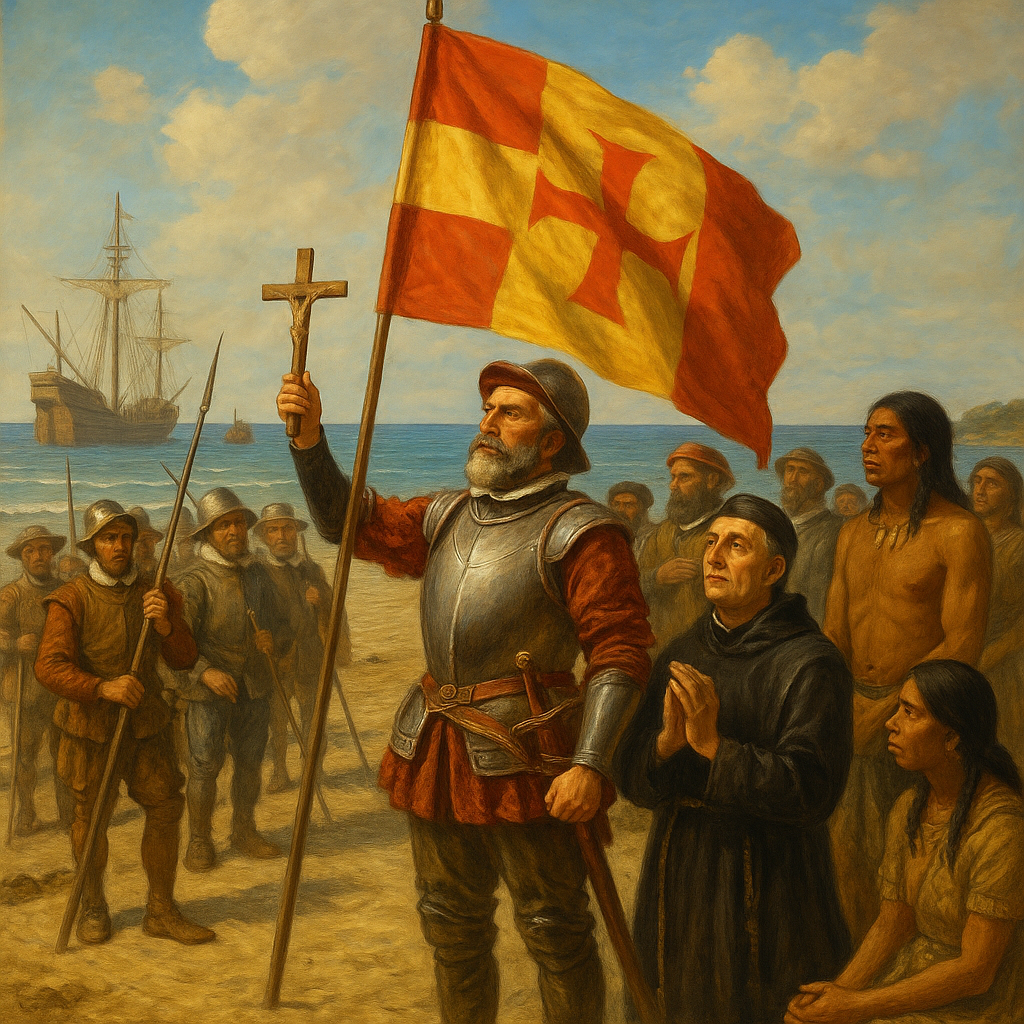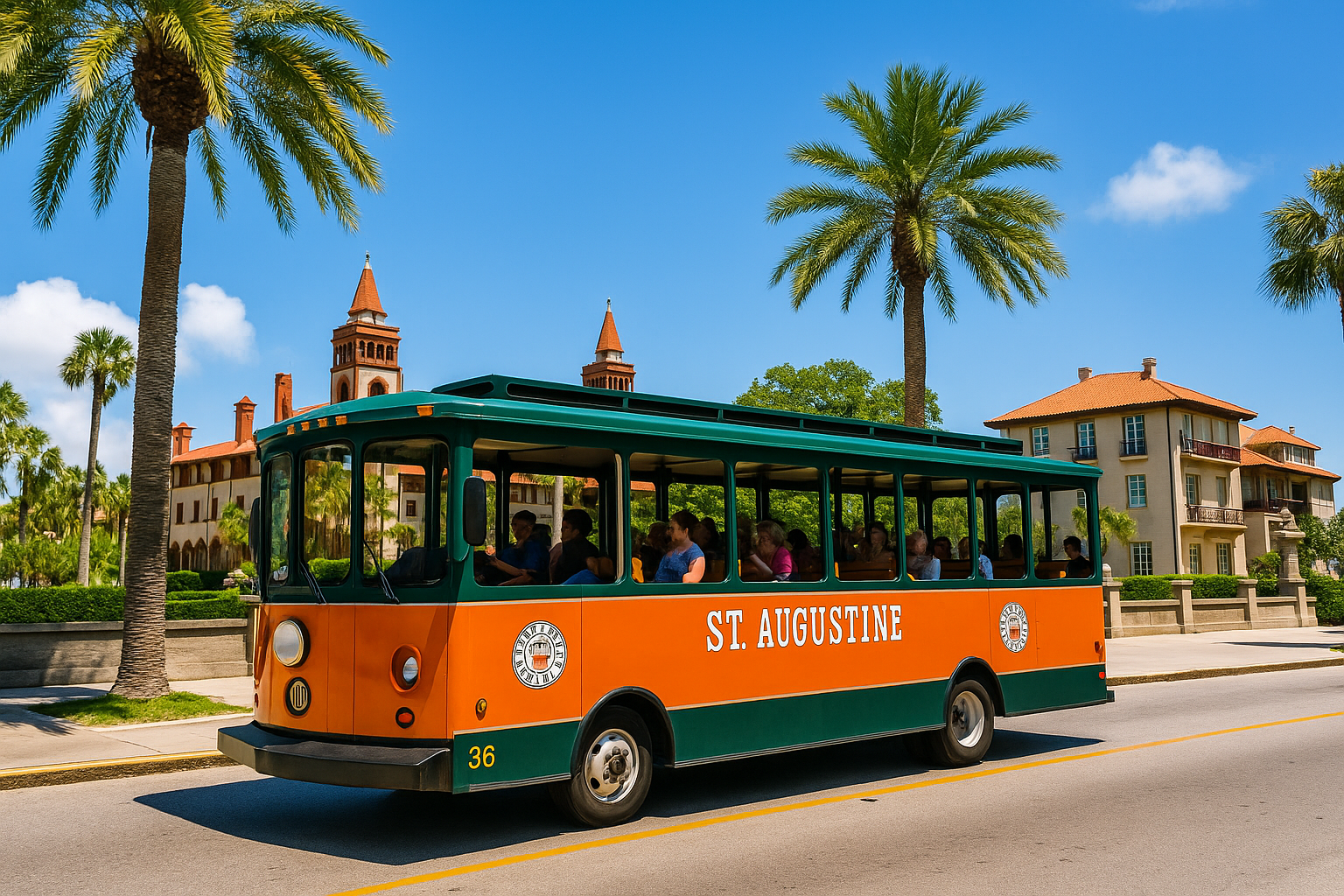The Founding of St. Augustine: Oldest City in the U.S.
Long before Plymouth Rock and Jamestown, there was St. Augustine. Founded in 1565 by Spanish explorer Pedro Menéndez de Avilés, it is the oldest continuously inhabited European settlement in the continental United States. But its survival wasn’t guaranteed. In fact, it was one of the few early colonial experiments that didn’t collapse under disease, war, or starvation. What made St. Augustine different? Brutal resolve, a strategic coastline, and Spain’s determination to hold its claim in the New World.
Spain’s Imperial Gamble
By the mid-1500s, Spain was riding high on gold and conquest. After claiming much of Central and South America, they turned their attention to North America to secure shipping routes and protect their territory from rival European powers. Florida wasn’t rich in minerals, but it held strategic value: it guarded the Gulf Stream, the water highway Spanish treasure fleets used to return to Europe.
Pedro Menéndez de Avilés, a naval officer with a ruthless reputation, was tasked with establishing a permanent settlement in Florida. His orders were clear: drive out the French and plant the Spanish flag.
The French Threat
France had already made a move. In 1564, French Huguenots—Protestants seeking religious freedom—had established Fort Caroline near modern-day Jacksonville. To Catholic Spain, this was not just a territorial threat but a religious one.
Menéndez landed on the Florida coast on September 8, 1565, naming the settlement San Agustín because his fleet had first sighted land on the feast day of St. Augustine of Hippo. Within days, he launched a surprise overland assault on Fort Caroline during a hurricane. Most of the French were killed; the survivors were executed or enslaved. A nearby inlet became known as Matanzas, Spanish for “slaughters.”
It was a violent birth, but one that secured Spain’s claim for centuries.
A Harsh Beginning
St. Augustine was no paradise. The early years were brutal. Hurricanes, native resistance, disease, and supply shortages nearly wiped the colony out more than once. But it held on. Spain kept the settlement afloat with shipments of food, soldiers, and supplies, even when it didn’t make economic sense. For Spain, St. Augustine was a military outpost, not a money-maker.
The settlement’s original location was moved several times within the first few years due to flooding and poor defensive positioning. Eventually, the Spaniards built a wooden fort, which would later be replaced by the massive stone Castillo de San Marcos in the 1670s—one of the city’s most iconic landmarks today.
Encounters with Native Peoples
Relations with local Indigenous groups were complex. The Timucua, who had lived in the area for thousands of years, initially helped the Spanish survive. Over time, disease, forced labor, and cultural repression devastated their population. Missions were built to convert them to Christianity and integrate them into the colonial system, but the result was often displacement and death.
Why It Lasted
So why did St. Augustine survive when so many other settlements failed? A few key reasons:
- Military focus: It was a fort first, a town second. Spain was willing to support it as a strategic foothold.
- Geography: Located on the Atlantic coast with access to major sea routes, it was a vital defense point.
- Resilience: The settlers, soldiers, and Indigenous laborers built and rebuilt the town after fires, storms, and attacks.
While other European colonies would rise and fall, St. Augustine endured. Over the centuries, it would change hands, face invasions, and reinvent itself, but it never disappeared. Today, walking its cobbled streets is like stepping into a living fragment of history.
It all started with a mission, a massacre, and an unshakable grip on a stretch of Florida coast that would shape the course of American history.






